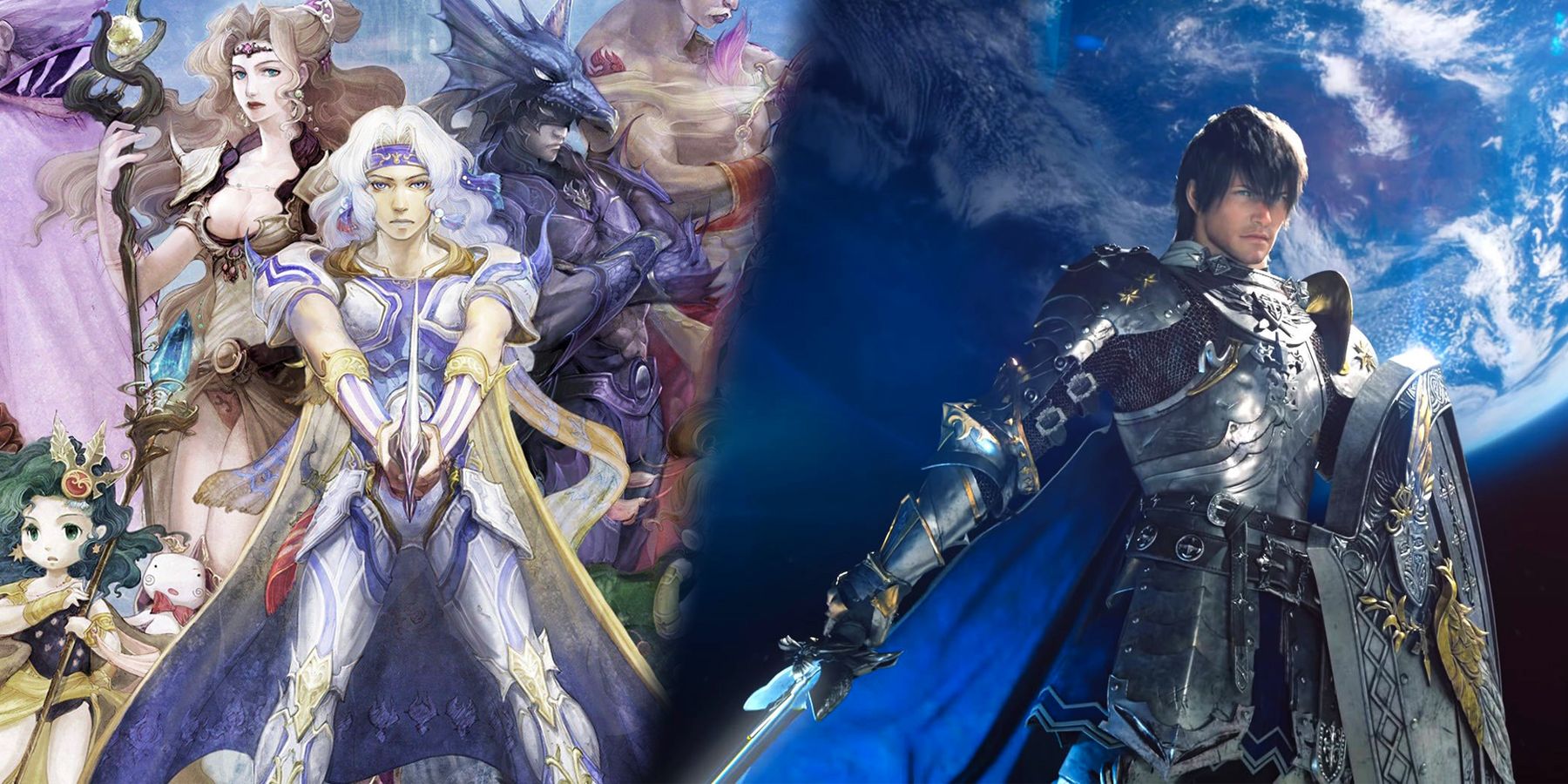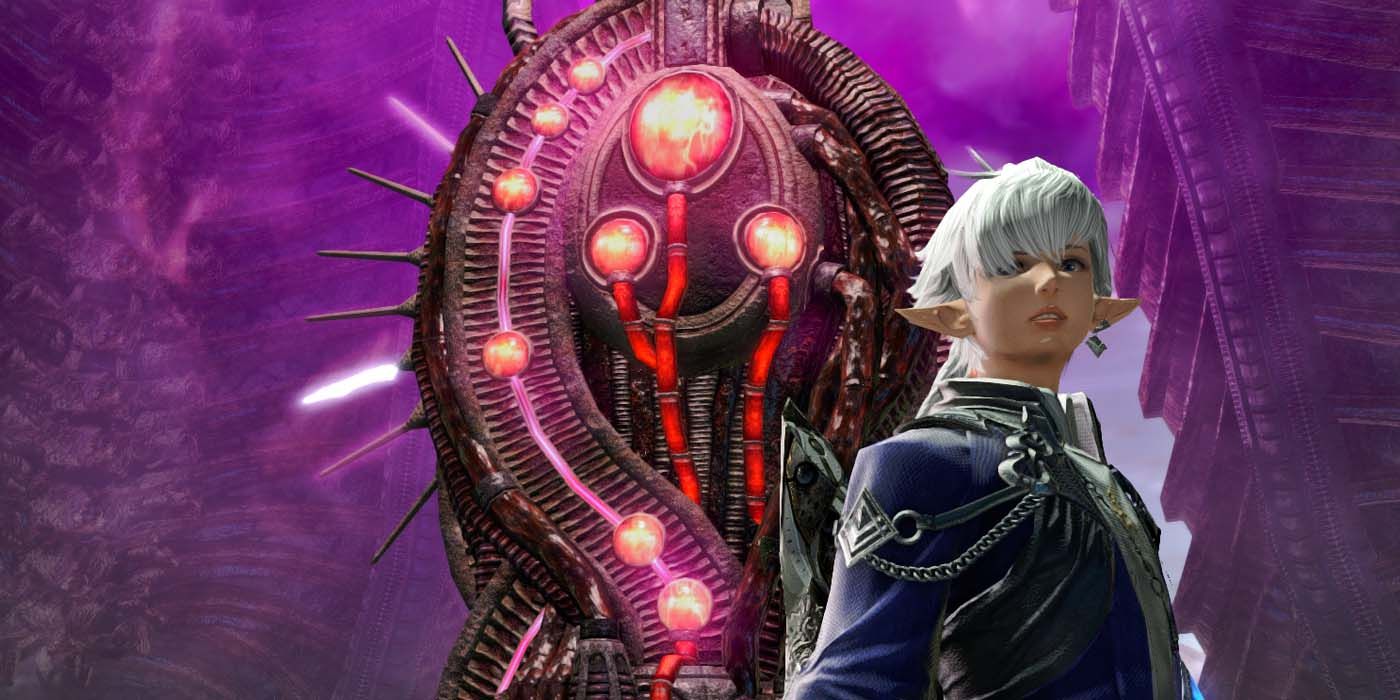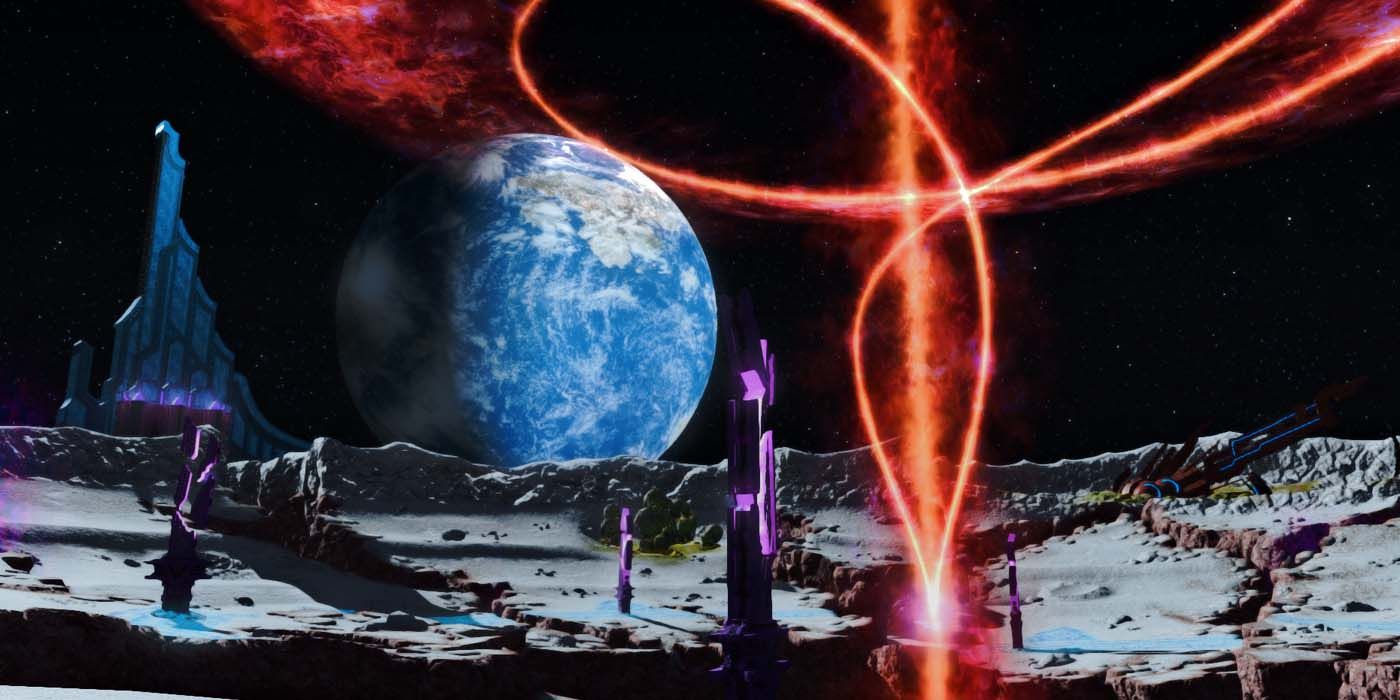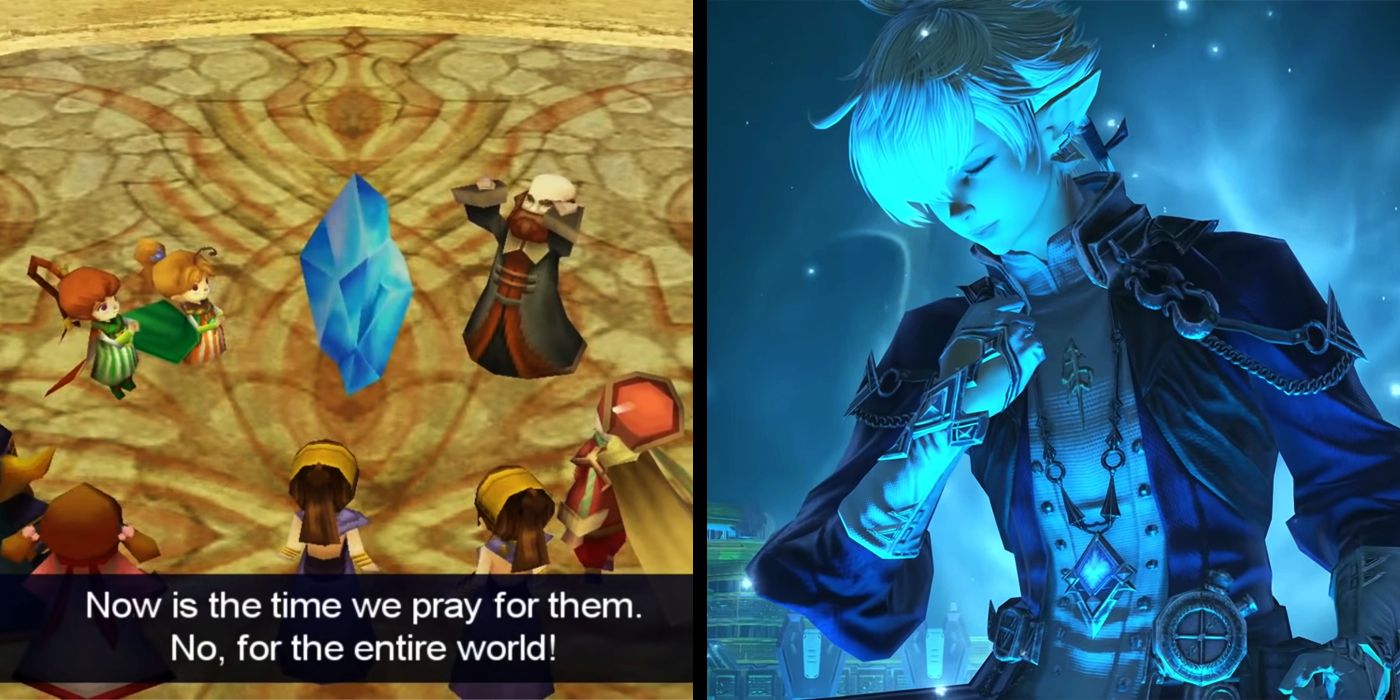Players have been flocking to Square Enix's hit MMORPG Final Fantasy 14 since the release of its latest expansion, Endwalker. The expansion was met with praise for its narrative and the way it concluded a story that began in 2013 with A Realm Reborn. Final Fantasy 14: Endwalker had plenty of surprises in store for fans of the franchise's previous installments, and Final Fantasy 4 players should be especially pleased with the number of callbacks to its characters, songs, locations, and themes.
Before the expansion's release, players were bombarded with a variety of Final Fantasy 4 minions and mounts. Players who pre-ordered the Endwalker collector's edition received a Palom and Porom minion, based on the lovable twin mages that accompanied Final Fantasy 4's protagonist Cecil. The lunar whale that carried Cecil and his companions to the moon for the game's finale was Final Fantasy 14's first mount that could hold eight players rather than the standard two, made available on the Final Fantasy 14 online store prior to the release of Endwalker. Rydia, Rosa, and Edge minions also went up for sale in the months preceding Endwalker.
The Tower of Zot and Tower of Babil
The first two dungeons players encounter in Endwalker are named after locations in Final Fantasy 4: the Tower of Zot and the Tower of Babil. The Tower of Zot is protected by the magus sisters, Minduruva, Sanduruva, and Cinduruva, who Final Fantasy 4 (and Final Fantasy 10) fans will recognize as Mindy, Sandy, and Cindy. The trio will use their signature delta attack in which Minduruva and Sanduruva will reflect their spells off of Cinduruva.
In the level 83 dungeon, the Tower of Babil, players will encounter Final Fantasy 4 bosses Barnabas and Dr. Lugae. The bosses function differently in Final Fantasy 14, but their spirit is still there. Dr. Lugae's battle will require players to afflict themselves with status ailments to avoid his attacks, much like his Final Fantasy 4 counterpart who would inflict status effects onto the party. The dungeon ends with another iconic enemy and summon from Final Fantasy 10: Anima.
The Moon
When players arrive at the moon in Final Fantasy 4, they will find that it is barren with only a few points of interest. At this point in Final Fantasy 4's story, players have reason to suspect Cecil isn't what he seems to be, as a previous encounter with the game's early antagonist Golbez results in Cecil being spared from certain doom. In the lunar crystal palace, Cecil meets a Lunarian named FuSoYa, who reveals that Cecil is the son of a Lunarian and brother of Golbez. Similarly, Final Fantasy 14 players are met by an ancient being that resides in the lunar crystal palace that offers revelations of the past and insight into Hydaelyn's plans.
The other lunar point of interest in Final Fantasy 14 is the Bestways Burrow. Here players are introduced to yet another familiar face in the form of the Loporrits, known in Final Fantasy 4 as the Hummingways. Their pension for humming appears to have dwindled since Final Fantasy 4's release, except for a few quests that allow players to hum their signature tune. While their debut in the franchise was Final Fantasy 4, the Loporrits are actually a reference to an ancient Japanese folktale.
Cecil encounters one Hummingway throughout his journey, known initially as Namingway. However, every time he is encountered, Namingway will have changed his name to coincide with his new job functions. The Loporrits in Final Fantasy 14 follow Namingway's legacy, with each being named after their designated role. The background music in Bestways Burrows is also an arrangement of Final Fantasy 4 track "Welcome to Our Town," and the battle music is altered to Final Fantasy 4's random encounter theme.
Finale and Minor References
Final Fantasy 14 Endwalker concludes with players confronting the Endsinger, which is a manifestation of the universe's collective despair and hopelessness. In Final Fantasy 4, the final antagonist is Zeromus, who is the manifestation of a single individual's hatred for humanity. In both encounters, prayers from companion characters grant the party strength when all seems lost. In Final Fantasy 4, characters met by the player gather in Mysidia to pray for Cecil and his team, and in Final Fantasy 14, prayers come when the Endsinger prepares her killing blow after players would have exhausted their limit break 3 to survive an ultimate attack. At this point, players a cutscene featuring their fellow scions gathered in prayer to save the player character and offer stat bonuses.
Some less noticeable references to Final Fantasy 4 come in the form of Kokkol, the Lalafell blacksmith found in one of Endwalker's new areas, Labyrinthos. Kokkol shares the name of the dwarf blacksmith found in the underworld, and in both games Kokkol will be in need of the scarce adamantite ore. Providing Kokkol with adamantite in Final Fantasy 4 results in him creating Excalibur, a powerful weapon wielded by Cecil, and in Final Fantasy 14, Kokkol will use the adamantite ore to help fuel the starship Ragnarok - which also shares a name with Cecil's most potent weapon.
The gear obtainable by players upon completing the Endwalker main story is modeled after the attire of Cecil and his companions. Casters can don the garments of the powerful summoner Rydia, meanwhile physical ranged classes will wear the outfit of Damcyan's Prince Edward. A final reference that may have eluded fans is the transition of the symbolic warrior of light from Final Fantasy 14's cinematic trailers, going from a dark knight in Shadowbringers to a paladin in Endwalker.
Final Fantasy 14: Endwalker is currently live on PC, PS4, and PS5, and will be available for purchase again on January 25.




